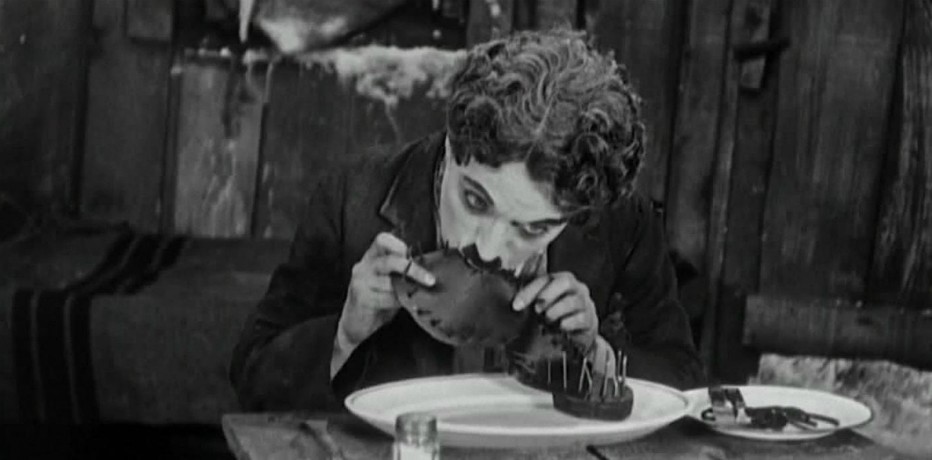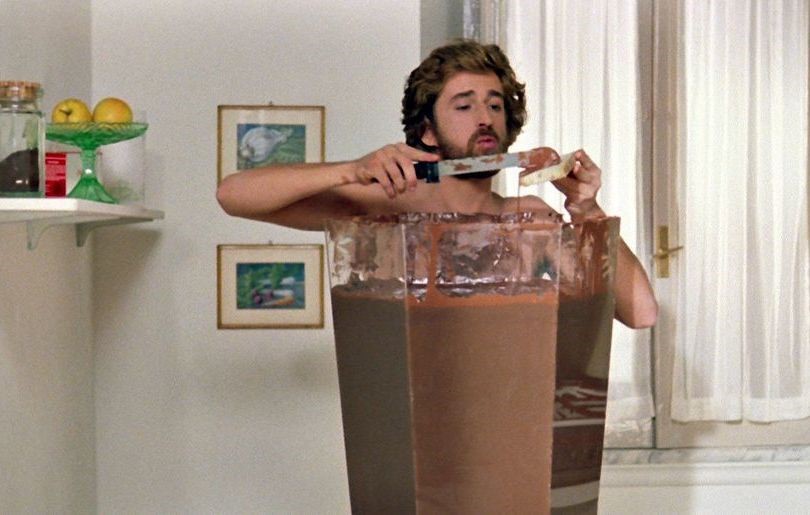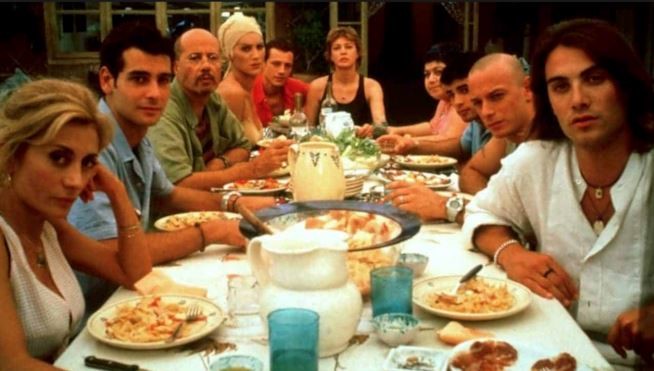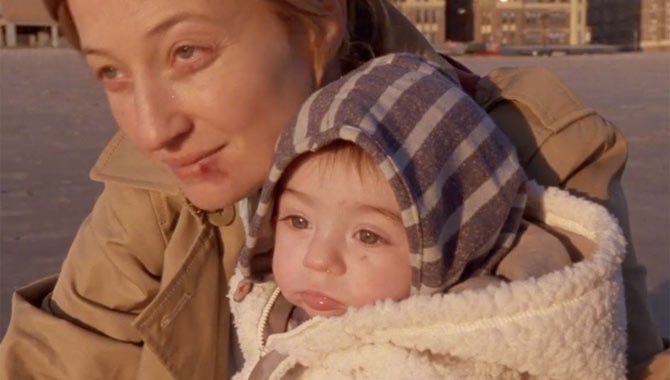Appetite comes by looking
Food in the cinematic imagination From its origins, cinema has described the relationship between man and money, investing it with cultural connotations that range from ethnic to...
Filter by Category
Filter by Author
From its origins, cinema has described the relationship between man and money, investing it with cultural connotations that range from ethnic to gender identity, from social class to religion. Starting from the Italian The Jester’s Supper, many films recall food or conviviality from their very title: The Dinner game, Mid-August Lunch, Wedding Banquet, Macaroni, Lezioni di cioccolato, Delicatessen, Mystic pizza, Fried Green Tomatoes, Babette’s Feast, A Walk in the Clouds1, The Great Pumpkin, Couscous, Tortilla soup, Barbecue, Kitchen stories, just to name a few.

Some of the most pervasive cinematic images are connected to food, images indelibly stored in our memory: Charlie Chaplin who in The Gold Rush desperately tries to eat the sole of a boot; the “American” Alberto Sordi who pounces on pasta, after having tried in vain to appreciate hamburgers and ketchup; and, above all, Totò’s ancestral hunger.
His is the hunger of all the South of Italy that haunts him film after film, pushing his character in Fear and Sand, Nicolino Capece, to improvise a sandwich with a sponge cut in two, smeared with toothpaste and sprinkled with talc. Moreover, we cannot forget to mention in We All Loved Each Other So Much, one of Scola’s most beautiful films, the famous half portion meal ordered by the protagonists: a modest trattoria, a familiar place, a way of meeting up with long-time friends, the emblem of post-war time made up of sacrifices and economic hardships. Or in Moretti’s cinema, the very symbolic obsession chocolate, most of all the love for Nutella (who does not remember him, in Sweet Body of Bianca, standing in front of a huge vase of the famous spreadable cream) and the obsession for the Sachertorte, to which he named his production company.

Furthermore, the mealtime scenes in many films by Ferzan Ozpetek, a privileged image of a friendship network that has replaced the family.

On the contrary, food sharing can also be transformed into a visual-narrative loophole that triggers an explosion of latent conflicts, sometimes with paradoxical results, such as in An Italian Name by Francesca Archibugi, or Perfect Strangers by Paolo Genovese.
It was perhaps inevitable that Italian directors, more than others, devoted great attention to food, first as a meaning of primary survival, then of well-being and a reflection of society with its contemporary neuroses. In the decades that separate Pasolini’s La ricotta (1963), in which poor Stracci dies of hunger on the cross, from Hungry Hearts (2014) by Saverio Costanzo, where the protagonist, suffering from orthorexia, comes to put the child’s life at risk with an increasingly nutrient-poor diet, one can read the profound transformation of our way of being in the world.

In the United States, the ritual return home for Christmas or Thanksgiving lunch has now become a genre in its own right, the occasion when family tensions, usually kept at bay thanks to the remoteness of the various members, have the opportunity to emerge with explosive enthusiasm.
Precisely in the sphere of US cinema, it is interesting to note how the link between food and family identity is expressed through characters and environment with a precise ethnic connotation, Hispanic, Chinese or Italian-American. For the latter, it is enough to mention Big Night and the Godfather trilogy, with the famous “leave the gun, take the cannoli” joke.
If it is true that food, even before eaten, is a spectacle for the eyes (according to some studies, the vision affects the taste by more than fifty per cent), the unbridled passion for its representation through rich and succulent images has earned it the name of “food porn”. Despite this, food has not lost its original function, that of exploring death, religious ecstasy, sex and love.
In short, since its first steps, cinema has embraced and given back to the viewer an imaginary linked to food in its multiple meanings, metaphorical, social and spiritual. It has declined it in endless variations, from drama to farce, from black comedy to costume.
What do oranges, pineapples, bananas, rice, mushrooms, nettle, beer and wine have in common? We can eat them, drink them and…weave them! Here are some examples. We can transform...
The garden of Daniel Spoerri, Founder EAT ART Old maps register it under the name of “Il Paradiso”. We are on the slopes of Monte Amiata, in front of the picturesque...